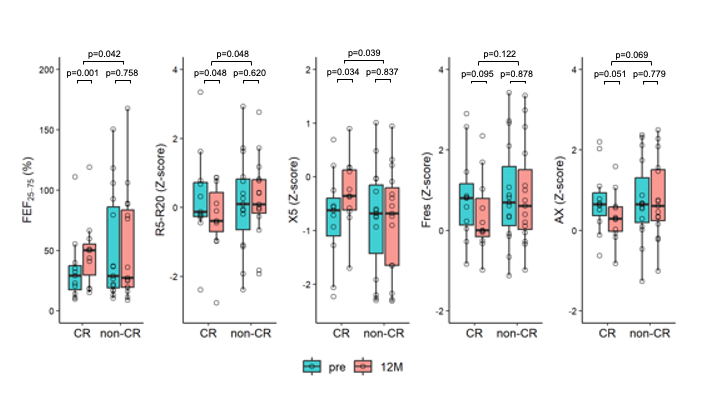Abstract
Background: Clinical remission (CR) of asthma with the introduction of biologics has been advocated. The changes in oscillometric indices in patients with CR by biologics are unknown.
Aims: To investigate the relationship between CR and changes in spirometric and oscillometric indices by biologics.
Methods: Of 58 patients treated with anti-IL-5/IL-5 receptor alpha (IL-5R?) antibodies, 31 patients who continued treatment for more than 12 months were evaluated retrospectively. Changes in these indices were analyzed in CR patients who met the criteria (ACQ ? 0.75, no exacerbations, no oral corticosteroids, and improvement of FEV1 ? 100 ml) and non-CR patients at 12 months. Small airway dysfunction (SAD) was evaluated using R5-R20, X5, Fres, and AX.
Results: After 12 months of continuous antibodies treatment, 25 (81%) patients had ACQ improvement, 27 (87%) had no exacerbations, 23 (74%) had no oral corticosteroids, and 16 (52%) had FEV1 improvement. 12 (39%) patients met all four criteria for CR. FEF25-75%, R5-R20, and X5 improved in only the CR group (p = 0.001, 0.048, and 0.034, respectively). Changes in R5-R20 and X5 were significantly greater in the CR group than in the non-CR group (p = 0.048 and 0.039, respectively) (Figure 1).
Conclusions: R5-R20 and X5, indices of SAD, significantly improved in asthmatic patients who achieved CR by anti-IL-5/IL-5R? antibodies.
